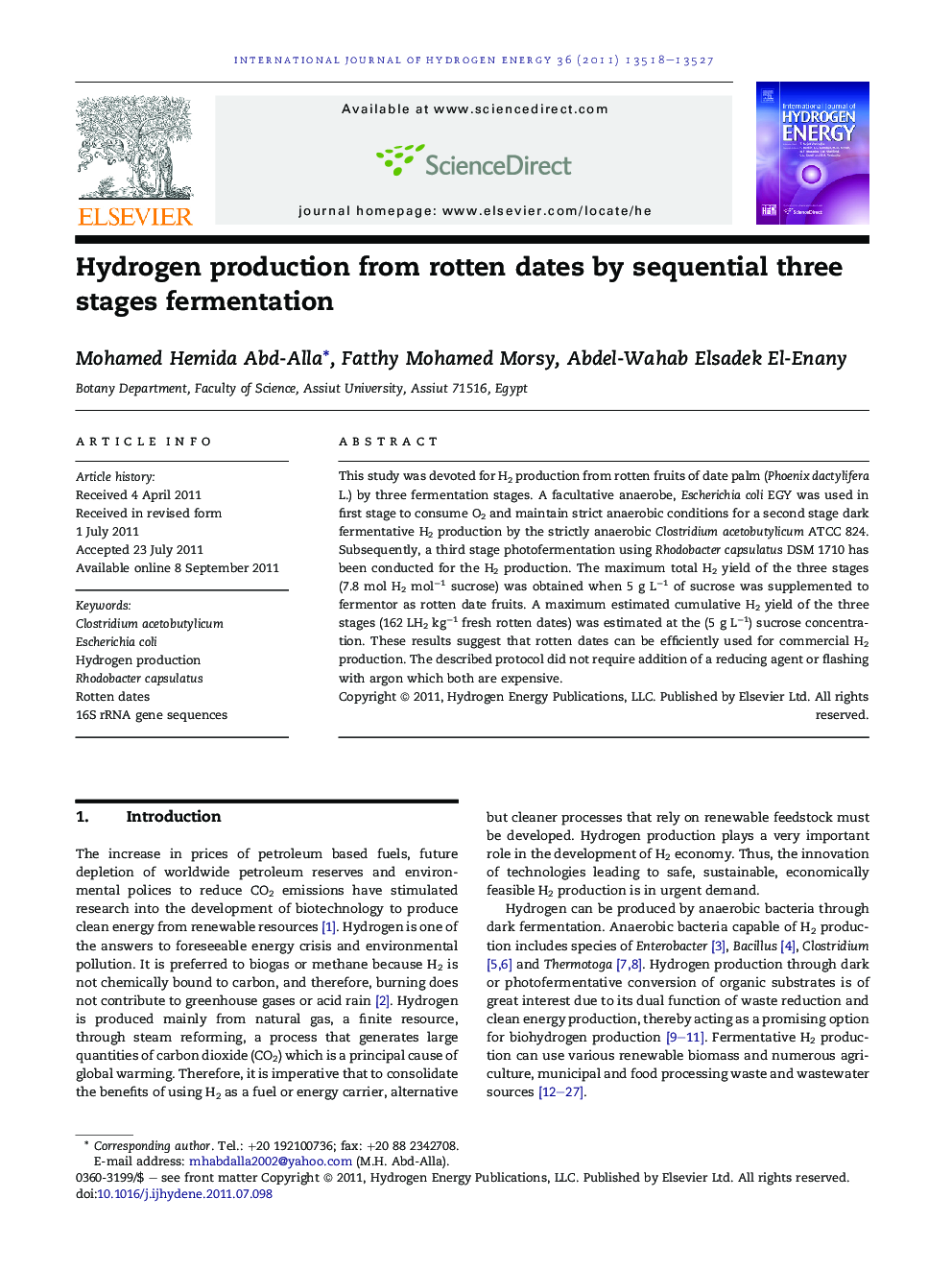| Article ID | Journal | Published Year | Pages | File Type |
|---|---|---|---|---|
| 1278694 | International Journal of Hydrogen Energy | 2011 | 10 Pages |
This study was devoted for H2 production from rotten fruits of date palm (Phoenix dactylifera L.) by three fermentation stages. A facultative anaerobe, Escherichia coli EGY was used in first stage to consume O2 and maintain strict anaerobic conditions for a second stage dark fermentative H2 production by the strictly anaerobic Clostridium acetobutylicum ATCC 824. Subsequently, a third stage photofermentation using Rhodobacter capsulatus DSM 1710 has been conducted for the H2 production. The maximum total H2 yield of the three stages (7.8 mol H2 mol−1 sucrose) was obtained when 5 g L−1 of sucrose was supplemented to fermentor as rotten date fruits. A maximum estimated cumulative H2 yield of the three stages (162 LH2 kg−1 fresh rotten dates) was estimated at the (5 g L−1) sucrose concentration. These results suggest that rotten dates can be efficiently used for commercial H2 production. The described protocol did not require addition of a reducing agent or flashing with argon which both are expensive.
► This study was devoted for hydrogen production from rotten date palm fruit by three sequential fermentation stages. ► The maximum hydrogen yield of the three stages was 7.8 mol H2 mol−1 sucrose at 5 g L−1 of sucrose as rotten date. ► The described protocol did not require addition of a reducing agent or flashing with argon which both are expensive.
